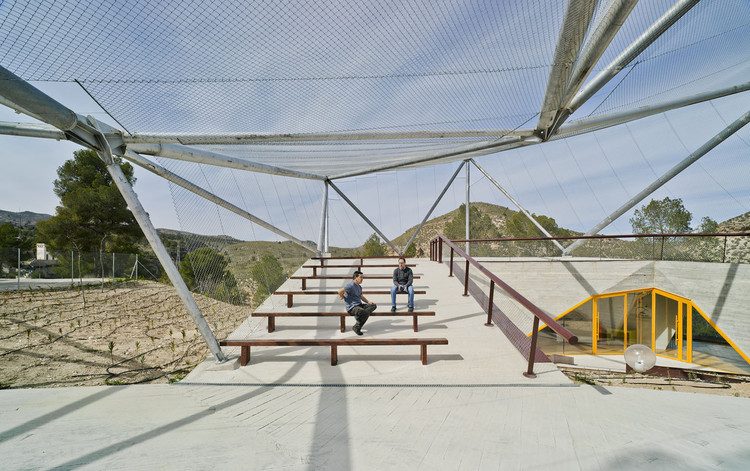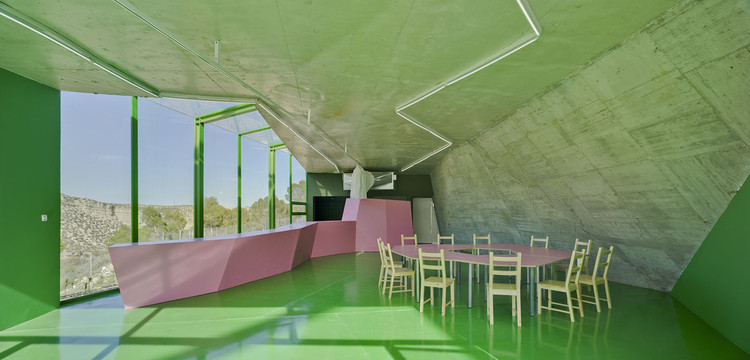
-
Architects: Adhoc Arquitectura y Territorio
- Year: 2015

Text description provided by the architects. Decades ago, when building an important infrastructure in Spain, it was usual to include living quarters for the caretakers. In our case, it was a hydroelectric power plant, still in operation. However, the dwellings had been abandoned and had fell into ruin. The project consisted in the definition of an interpretation centre that would take the place of those ruins, and the refurbishment of the surrounding area. It was an opportunity for working in a natural setting that had already been intervened on.

The Cañón de Almadenes is a natural gorge. It is several kilometers long, and was created by the River Segura through the Sierra de la Palera, in its impatience in getting earlier to the town of Cieza. It is of course narrow and misterious, and some of its side walls are over a hundred meters high. But over the natural values of every gorge, in the area we also have many more valuable elements: abundant and diverse fauna, surprising chasms, spectacular cave paintings, indigenous vegetation, and much more. Our centre must be imagined as an access point to all that knowledge, a place to organize how people got in contact with that diversity of experiences.

We won the 2006 tender with our first proposal, but we continued suggesting other options that would allow for a greater integration, that communicated more environmental awareness, or resulted in a gentler intervention. We carried out the final project and all the construction work for years, without having committed these words to paper until very recently. Until we were finally able to understand what we were rejecting: we didn't want the visitor to be the axis, the reference or the main role of the story. We intended to develop an architecture that transmitted the relevance of nature, geography and their multiple agents, where the visitor would be one more actor, or an explorer. And wherever possible, a thrilled explorer.

In this way, functional spaces get dispersed, and wandering becomes a geological imperative that we cover lightly with local green climbing plants, and that sometimes we have to transverse to access the centre's services —which we also equipped.

This is just a fraction of the intervention: the other part is the effort made to turn it into the first public building with zero net energy in Spain. In 2009 the European Parliament agreed that every building developed from 2019 on should produce the same amount of energy it consumes, through renewable energy systems and increased energy efficiency. The reality is that there is not enough progress towards this objective. In any case, Almadenes includes all the necessary energy systems, and combined, in a typical year, the balance should be zero. It also has the necessary resources to completely manage its water needs.



















